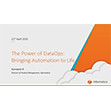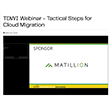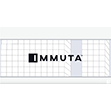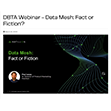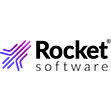
Selecting a Data Lake ETL Platform? Here Are 6 Questions to Ask

(Alexander Supertramp/Shutterstock)
Not all data lakes are created equal. If your organization wants to adopt a data lake solution to simplify and more easily operate your IT infrastructure and store enormous quantities of data without requiring extended data transformation, then go for it.
But before you do, understand that simply dumping all your data into object storage such as AWS S3 doesn’t exactly mean you will have a working data lake.
The ability to use that data in analytics or machine learning requires converting that raw information into organized datasets you can use for SQL queries, and this can only be done via extract-transform-load (ETL) flows.
Data lake ETL platforms are available in a full range of options – from open-source to managed solutions to custom-built. Whichever tool you select, it’s important to differentiate data lake ETL challenges from traditional database ELT demands – and seek the platform that overcomes these obstacles.
Ask yourself which ETL solution:
1. Effectively Conducts Stateful Transformations
Traditional ETL frameworks allow for stateful operations like joins and aggregations to enable analysts to work with data from multiple sources; this is difficult to implement with a decoupled architecture.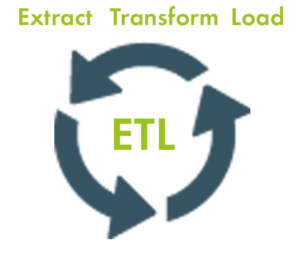
Stateful transformations can occur by relying on extract-load-transform (ELT) – i.e., sending data to an “intermediary” database and using the database’s SQL, processing power and already amassed historical data. After transformation, the information is loaded into the data warehouse tables.
Data lakes, aiming to reduce cost and complexity by avoiding decoupled architecture, cannot depend on databases for every activity. You’ll need to look for an ETL tool that can conduct stateful transformations in-memory and needs no additional database to sustain joins and aggregations.
2 Extracts Schema from Raw Data
Organizations customarily use data lakes as a storehouse for raw data in a structured or semi-structured arrangement vs databases, which are predicated on structured tables. This poses numerous challenges.
One, in order to query data, can the data lake ETL tool draw out a schema (without which querying is not possible) from the raw data – and bring it up to date as changes in data and data structure come about? And two — this is an ongoing struggle — can the ETL tool effectively make queries with nested data?
3 Improves Query Performance Via Optimized Object Storage
Have you tried to read raw data straight from a data lake? Unlike using a database’s optimized file system that quickly sends back query results, doing the same operation with a data lake can be quite frustrating performance-wise.
To get optimal results, your ETL framework should continually store data in columnar formats and merge small files to the 200mb-1gb range. Unlike traditional ELT tools that only need to write the data once to its target database, data lake ETL should support the ability to write multiple copies of the same data based on the queries you will want to run and the various optimizations required for your query engines to be performant.
4 Easily Integrates with the Metadata Catalog
You’ve chosen the data lake approach for its flexibility — store large quantities if data now but analyze it later — and the ability to handle a wide range of analytics use cases. Such an open architecture should keep metadata separate from the engine that queries it, so you can easily change these query engines or use several simultaneously for the same data.
This means the data lake tool you select should reinforce this open architecture, i.e., be seamlessly merged with the metadata catalog. This allows the metadata to be easily “queryable” by various services because it is both stored in the catalog and still dovetails with every adjustment in schema, partition, and location of objects.
5 Replays Historical Data
Say you wanted to test a hypothesis by looking at stored data on a historical basis. This is difficult to accomplish with the traditional database option, where data is stored in a mutable condition, and in which running such a query could be prohibitive in terms of cost, stress, and tension between operations and analysis.
It’s easy to do with a data lake. In data lakes, stored raw data remains continuously available – it only transformed after extraction. Therefore, having a data lake allows you got “travel back in time,” seeing the exact state of the data as it was collected.
“Traditional” databases don’t allow for that, as the data is only stored in its transformed state.
6 Updates Tables Periodically
Data lakes, unlike databases that allow you to update and make deletions to tables, contain partitioned files that enable an append or add-only feature. If you want to store transactional data, implement change data capture in the data lake, or delete particular data for GDPR compliance, you’ll have difficulty doing so.
Make sure that the data lake ETL tools you choose have the ability to sidestep this obstacle. Your solution should be able to allow upserts, a system that lets you insert new records or update existing ones, in the storage layer and in the output tables.
About the author: Ori Rafael is the CEO and co-founder of Upsolver, a provider of a self-service data lake ETL platform that bridges the gap between data lakes and data consumers. Ori has worked in IT for nearly two decades and has an MBA from Tel Aviv University.
Related Items:
Merging Batch and Stream Processing in a Post Lambda World
August 1, 2025
- MIT: New Algorithms Enable Efficient Machine Learning with Symmetric Data
- Micron Expands Storage Portfolio with PCIe Gen6 and 122TB SSDs for AI Workloads
- DataRobot Announces Agent Workforce Platform Built with NVIDIA
- Menlo Ventures Report: Enterprise LLM Spend Reaches $8.4B as Anthropic Overtakes OpenAI
- Confluent Announces $200M Investment Across Its Global Partner Ecosystem
- Zilliz Sets New Industry Standard with VDBBench 1.0 for Benchmarking Real Vector Database Production Workloads
- Symmetry Systems CSO Releases Book on Data Security Strategies for the AI Era
July 31, 2025
- Google DeepMind’s AlphaEarth Model Aims to Transform Climate and Land Monitoring
- Elsevier Launches Reaxys AI Search for Natural Language Chemistry Queries
- Boomi Brings Sovereign Data Integration to Australia
- Scality Releases Open Source COSI and CSI Drivers to Streamline File Storage Provisioning
- Informatica Boosts AI Capabilities with Latest Intelligent Data Management Cloud Platform Release
- Helix 2.0 Gives Global Enterprises the Fastest Path to AI Agents on a Private GenAI Stack
- Anaconda Raises Over $150M in Series C Funding to Power AI for the Enterprise
- Supermicro Open Storage Summit Showcases the Impact of AI Workloads on Storage
- Observe Closes $156M Series C as Enterprises Shift to AI-Powered Observability at Scale
- Stack Overflow’s 2025 Developer Survey Reveals Trust in AI at an All Time Low
July 30, 2025
- Scaling the Knowledge Graph Behind Wikipedia
- LinkedIn Introduces Northguard, Its Replacement for Kafka
- Rethinking Risk: The Role of Selective Retrieval in Data Lake Strategies
- Top 10 Big Data Technologies to Watch in the Second Half of 2025
- What Are Reasoning Models and Why You Should Care
- Apache Sedona: Putting the ‘Where’ In Big Data
- Rethinking AI-Ready Data with Semantic Layers
- What Is MosaicML, and Why Is Databricks Buying It For $1.3B?
- Top-Down or Bottom-Up Data Model Design: Which is Best?
- LakeFS Nabs $20M to Build ‘Git for Big Data’
- More Features…
- Supabase’s $200M Raise Signals Big Ambitions
- Mathematica Helps Crack Zodiac Killer’s Code
- Promethium Wants to Make Self Service Data Work at AI Scale
- Solidigm Celebrates World’s Largest SSD with ‘122 Day’
- AI Is Making Us Dumber, MIT Researchers Find
- The Top Five Data Labeling Firms According to Everest Group
- Toloka Expands Data Labeling Service
- With $20M in Seed Funding, Datafy Advances Autonomous Cloud Storage Optimization
- Ryft Raises $8M to Help Companies Manage Their Own Data Without Relying on Vendors
- AWS Launches S3 Vectors
- More News In Brief…
- Seagate Unveils IronWolf Pro 24TB Hard Drive for SMBs and Enterprises
- Gartner Predicts 40% of Generative AI Solutions Will Be Multimodal By 2027
- OpenText Launches Cloud Editions 25.3 with AI, Cloud, and Cybersecurity Enhancements
- TigerGraph Secures Strategic Investment to Advance Enterprise AI and Graph Analytics
- Promethium Introduces 1st Agentic Platform Purpose-Built to Deliver Self-Service Data at AI Scale
- StarTree Adds Real-Time Iceberg Support for AI and Customer Apps
- Gathr.ai Unveils Data Warehouse Intelligence
- Databricks Announces Data Intelligence Platform for Communications
- Graphwise Launches GraphDB 11 to Bridge LLMs and Enterprise Knowledge Graphs
- Open Source Data Integration Company Airbyte Closes $26M Series A
- More This Just In…
















